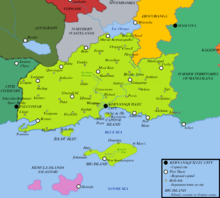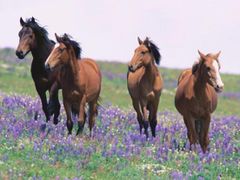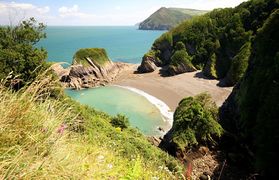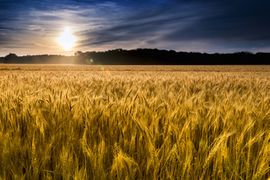Kernansquillec
| This page is a work in progress by its author(s) and should not be considered final. |
| The Parliamentary Republic of Kernansquillec
|
|||||
|---|---|---|---|---|---|
|
|||||
| Motto: "Force, Liberté et Honneur." "Strength, Freedom and Honor." |
|||||
| Anthem: "Hills of the Motherland" | |||||
Kernansquillec in the Gold Coast (Rushmore)
|
|||||
| Region | Rushmore | ||||
| Capital and largest city | Kernansquillec City | ||||
| Official languages | English, French | ||||
| Demonym | Kernansquillecan | ||||
| Government | Parliamentary Republic | ||||
| - | Prime Minister | Daina Leonardsson (Dem) | |||
| - | The Peoples' President | Brandee Danniell (Vox) | |||
| Legislature | The House of the People | ||||
| - | Upper house | The Hall of Elected | |||
| - | Lower house | The Peoples' Senate | |||
| History | |||||
| - | Kernakàn unified | 23rd November 881 | |||
| - | Reunification | 6th February 1378 | |||
| - | The First Republic | 10th October 1743 | |||
| - | The Second Republic | 15th June 1765 | |||
| - | Currant Republic | 1st July 2032 | |||
| Area | |||||
| - | Total | 1,976,986 km2 763,318 sq mi |
|||
| - | Water (%) | 2.3% | |||
| Population | |||||
| - | 2065 estimate | 301,296,931 | |||
| - | Density | 152.40/km2 394.7/sq mi |
|||
| GDP (nominal) | 2068 estimate | ||||
| - | Total | N$D 16.648 trillion (₭ 10.400 trillion) |
|||
| - | Per capita | N$D 55,257.50 (₭ 34,510.68) |
|||
| Gini (2068) | 0.070 low |
||||
| HDI (2070) | 0.848 very high |
||||
| Currency | The Urbk (₭) | ||||
| Time zone | Branta Time (UTC+1) | ||||
| Date format | dd/mm/yyyy | ||||
| Drives on the | left | ||||
| Calling code | 22 | ||||
| ISO 3166 code | KRN | ||||
| Internet TLD | .krn | ||||
Kernansquillec ([kɜ:ʳnoʊnski:jek]), officially the Parliamentary Republic of Kernansquillec (French: République Parlementaire de Kernansquillec [ʁepyblik paʁləmɑ̃tɛʁ də kɜ:ʳnoʊnski:jek]), is a sovereign state comprising territory in south western Ruhsmore. Kernansquillecan territory extends from Lac Oranga and Uzekia to the Goose Sea, from Civil Citizenry to the former territories of Mangolana. Kernansquillec spans 1,976,986 km² (763,318 sq mi) and has a total population of 301.3 million. It is a unitary semi-parliamentary republic with the capital in Kernansquillec City, the country's largest city and commercial hub.
The first humans to live in the modern-day region of Kernansquillec are believed to have arrived around 2500BT. Settlements began to develop from the end of the Prehistoric Era and by the 6th century most of Kernansquillec was divided into a large system of city-states. An actual unified country covering the territory of modern-day Kernansquillec would only emerge with the Kernak Era. Following the conquests of Kernak I and his son, Kernak II, a nation - by the name of Kernakàn - was founded on the 23rd November 853.
The unified nation would not last however. By the turn of the millennium a Dark Age had set upon the land as Kernakàn was split in two: northern Oranges and southern Kernanski. The division between the two halves would remain in place until 1378 when an actual nation called Kernansquillec was born. The price for unity was high however, as the nation became subdued by a radical theological regime known as the Saviors. The regime would last until the mid-18th century when a new struggle was born: the fight for democracy. Two civil wars would follow one another, but the 1st October 1765, the constitution of the Second Parliamentary Republic of Kernansquillec was sighed by Kernansquillec's new Prime Minister, Benjamin Orinda.
Kernansquillec was developed at a fast pace afterwards and soon became an economic powerhouse in Rushmore. Everything changed in 2020 however as the Great War began. A seemingly stable and prosperous nation was dragged into an eleven year long war that would drain resources and bring the country to the brink of collapse in the fight against Uzekian forces. Victory in July 2031 marked the beginning of the Third Republic and set in motion the construction of today's Kernansquillec.
Since the rise of the First Republic, Kernansquillec's cultural and economic influence in Rushmore has grown. Kernansquillec is one of the most popular destinations for foreign visitors in Rushmore with an estimated 145 million tourists arriving every year. Kernansquillec is a developed economy, producing an estimated 16.648 trillion N$D worth of GDP per year, while managing to keep a very high level of living for all citizens. Kernansquillec is famed for its incredibly low Gini coefficient with the divide between rich and poor greatly reduced thanks to ambitious taxation policies. Kernansquillec also performs well in terms of welfare spending, public education and eco-friendliness.
Kernansquillec is a well respected power in the world. It is a member of the World Assembly and of the Security Council. Kernansquillec also has a developped military force of over 233,000 personnel.
Contents
Etymology
Kernansquillec's name is derived from the name of the first country to be formed on it's mainland, Kernakàn, which in turn was named after it's first King, King Kernak I. Kernakàn then evolved into Kernanski during the Dark Ages before a nation called Kernansquillec was born in 1378. The first mention of the name being used can be dated back to 1303.
Kernansquillec's inhabitants are known as Kernansquillecans while the country's name can be shortened to the trigram KRN, namely for international sporting events such as the Olympic Games or the UICA's Champions' Cup.
History
Main Article: History of Kernansquillec
After the most recent conflict in Kernansquillecan history, many historical records were destroyed. But after much research, many records have now been restored and historical research is a booming field of study in Kernansquillecan universities.
Prehistory
Main Article: Prehistoric Era in Kernansquillec
The Prehistory Period is defined as the period that precedes the start of the construction of a true Kernansquillecan state and is generally considered to have ended once a written trace of time keeping was discovered in the year zero. The first traces of man settling in Kernansquillec date back to around 2500BT with the oldest traces, wall paintings in a cave, being found close to Lac Oranga in Northern Kernansquillec. As the number of human communities sprung up, eventually a "southern push" took place, with many communities moving to the southern and western parts of the land. By 1600BT experts believe that most of Kernansquillec's south coast had human settlements that had started to farm and build huts.
Progress was being made fast by these first Kernansquillecans. Estimate put the population of Kernansquillec around 750BT at about 80 000 individuals. The end of the prehistoric period is marked by the development of written and spoken language. The Kernansquillecan language evolved from primitive grunts to audible words and even phrases by 750BT and by 200BT a rich vocabulary had evolved and the first written words even started to emerge. Some evidence shows that a form of schooling had even evolved in certain tribes to the west of Kernansquillec by 150BT.
The Building of a Nation
Main Article: The rise of Kernakàn
The Dark Ages
Main Article: The Dark Ages in Kernansquillec
The Struggle for Democracy
Main Article: The Birth of the First and Second Republics
Reconstruction and Democracy
Main Article: Life under the Second Republic
A Modern Tragedy
Main Article: The Great War
Contemporary period
Main Article: Present-day Kernansquillec
Geography
Location and borders
Kernansquillec is located in the Goose Coast region of South-West Rushmore. It is bordered by Civil Citizenry and Astograph in the West, Uzekia and Djocoranga in the North and by the former territories of Mangolana in the East. In the south Kernansquillec is bordered by the Blue Sea and the Goose Sea and also has maritime border with the Hemula Islands of Olastor.
Kernansquillec has a land mass of 1,976,986 km² (763,318 sq mi) comprised for the most part in the mainland, while the islands of Big Island, Île du Bleu and Capitol Island make up the rest. With its island possessions Kernansquillec possesses territorial waters covering 4,629,231 km² (1,787,356 sq mi) and has an exclusive economic zone covering 28,254,329 km² (10,909,057 sq mi).
Located within central Kernansquillec and at 4,126.52 meters (13,538 feet) above sea level, Mont Kate is the tallest point in the country. Kernansquillec also has extensive river systems, most notably the Faisan, the Gingère and the Tissier.
Climate
Kernansquillec has a fairly temperate climate though it does chance throughout the country. Along the South Coast the climate is much warmer, with the temperatures usually well into the mid to high twenties during the summer. Central Kernansquillec is much cooler in general, especially around the mountain range that runs from south-west of the city of Mont Kate up to the south of Mur-de-Kernansquillec. There is also a much smaller mountain range in central Big Island that often causes heavy downfalls during Spring.
Across Kernansquillec average temperatures range from -6°C to 5°C during the winter months up to 17°C to 26°C during peak summertime. Rainfall follows a similar pattern with around 100mm during the winter months, while the summer sees about half as much.
Environment and Wildlife
Kernansquillec is generally considered to be one of the most environmentally friendly countries in Rushmore with the country having turned carbon-neutral since 2046. With it clean, fresh air, beautiful landscapes and clean natural water, it has significantly develop a large tourism sector despite the weather hardly being one of a paradise. Strict business regulations, public policies and law enforcement has allowed for a balance to be found between economic production and environmental protection.
Thanks to these efforts, wildlife has thrived. Amateur and recreational hunting has been banned since 1822, while the first national parks were created in 1492. Kernansquillec is an animal loving nation with over half of households owning a pet. Animals and wildlife are well looked after, with violence against animals dealt with in a harsh manner. Animals have had their own separate judicial status since 1910 allowing crimes to be punished in manner that often are barely different from similar crimes against humans.
Demographics
Population
The latest census dates back to 2065 and estimates the population of Kernansquillec to be 301,296,931 with an average density of 152.40 inhabitants per square km. As of 2065, around 75 million inhabitants were under 18 years old, 165 million were aged between 18 and 65 years of age, while over 65s accounted for 60 million or so inhabitants. Life expectancy is very high and is estimated to be 85.82 years. An overwhelming majority of the population are of Kernansquillecan nationality (91.9%). The remaining population is composed mostly of Rushmori citizens, namely for neighboring states. Uzekians (2.8%) form the largest minority.
Language
Kernansquillec has to particularity of having two national languages: English and French. Both are used regularly with an estimated 97% of the population being bilingual. While English is the more commonly used, both are taught in schools equally. French is often the dominating language in northern regions, namely in Oranga.
Largest Cities
Kernansquillec's population is largely a city dwelling population with just 16% of the population living in the countryside. The twenty largest cities in Kernansquillec have a population of over 189 million. Kernansquillec City, the capital, has the largest population of any Kernansquillecan city at just over 26 million.
| Largest cities or towns of Kernansquillec 2065 census | |||||||||
|---|---|---|---|---|---|---|---|---|---|
| Rank | Name | Region | Pop. | Rank | Name | Region | Pop. | ||
 Kernansquillec City New Southampton |
1 | Kernansquillec City | The Capitol | 26,268,216 | 11 | Mur-de-Kernansquillec | Oranga | 6,519,226 |  Guingamp  Port Marie |
| 2 | New Southampton | Big Island | 20,129,364 | 12 | Gwensfield | Bretania | 6,485,264 | ||
| 3 | Guingamp | Faisanshire | 14,729,692 | 13 | Cité de l'Île | The Capitol | 6,407,362 | ||
| 4 | Port Marie | Gossian | 12,019,020 | 14 | Jadaq | Aragàn | 6,384,545 | ||
| 5 | Rennes | Roazhon | 11,969,256 | 15 | Illeford | The Capitol | 6,284,356 | ||
| 6 | Binic | Coronon | 10,521,002 | 16 | St Mary's | Big Island | 6,185,232 | ||
| 7 | Amaretta | Trégor | 9,215,649 | 17 | Belle-Isle | Vilaine | 6,081,262 | ||
| 8 | Louargat | Menezer | 8,752,649 | 18 | Criwell | Oranga | 6,075,361 | ||
| 9 | Corlay | Marives | 7,665,264 | 19 | Citzar | Menezer | 5,864,555 | ||
| 10 | Mont Kate | Katines | 7,005,958 | 20 | Riveille Town | Faisanshire | 5,200,002 | ||
Politics
Government
The Parliamentary Republic of Kernansquillec is a unitary semi-parliamentary republic with strong democratic traditions. The Constitution of the Third Republic was approved by referendum on the 1st July 2032. The executive branch has one leader, the Prime Minister, who is the head of state and elected for a five-year renewable term by direct adult universal suffrage. The Prime Minister is also the head of the government and has to power to name and remove ministers.
The Kernansquillecan legislature, the House of the People, is a bicameral system comprising the Hall of the Elected and the Peoples' Senate. The Hall of the Elected (also simply known as the Hall) is composed of 250 members who represent constituencies and are directly elected for renewable five-year terms, as well as an additional 50 members who's seats are distributed to lists based on their performances in the first round of the Prime Ministerial election. The Prime Minister holds the 301st seat of the Hall. The Hall has the power to dismiss the government (though not the Prime Minister himself) meaning that the Prime Minister can only form a government from the majority group of the Hall. In practice it is rare for such a situation to occur and has so far led to the Prime Minister resigning of his own accord and new general and Prime Ministerial elections being held.
Members of the Peoples' Senate (senators) are chosen at random for one-year non renewable terms from the register of citizens, a register containing all citizens of Kernansquillec registered to vote. The drawing of senators takes place every 1st July and is conducted in public by the Prime Minister. Certain dispensations can be made for those drawn, such as military and educational obligations, health problems and parenthood. Members of the Senate are compensated with an income worth ₭160,000, the same salary as the Prime Minister and other Members of the Hall of the Elected. While the Senate's powers are limited, they are able to introduce legislation and can force legislations to be submitted as a referendum with a double rejection of a bill.
Kernansquillecan politics are very open and have multiple parties with considerable influence. In the Hall, the Democratic Party and the Union of Representatives are generally the strongest forces, while in the Peoples' Senate Vox is nearly always the strongest force by a considerable margin. The latest elections were held in 2068 and the Union of Representatives retain their majority.
Referendums are a common part of political life in Kernansquillec and bi-annual referendum days are now a firm part of the calendar. Referendums can be held either by a Prime Ministerial Act, a 2/3rds majority vote in Parliament, or a majority vote in Parliament after the Senate twice rejected the same bill (once the Senate has rejected the same bill twice in a row, Parliament may no longer discuss legislation on the subject and must hold a vote on wherever to abandon the legislation or submit it for a referendum).
Kernansquillecan citizens of the age of 17 and over are eligible to vote and stand for election, baring certain exceptions (mental illness, certain crimes or criminal records, etc.). Signing up to the electoral register is obligatory and is the only way for citizens to access governmental services such a social security, free healthcare and other services (a separate system exists for foreign residents). Voting is also obligatory and refusing to do so can lead to fines of up to ₭5,000. However, with obligatory voting come the provisions for white votes to be accounted for, and should the total white votes finish in first place at an election, then said post shall be chosen by a draw in the same manner as within the Peoples' Senate, but the person chosen will serve as a usual elected official (same term, rights, income, etc.).
Law
Foreign Relations
Kernansquillec has strived to become an important international partner to nations around Rushmore and the world over the past years. As a World Assembly member Kernansquillec has diplomatic missions to the World Assembly and to the Security Council, contributing to the debates, the votes and the budget. Kernansquillec is also a notably contributor to foreign aid with an annual budget of 209 billion U$D (130 billion Urbks).
Kernansquillec notably enjoys close ties with Rushmori nations and has worked closely with them over the past decades. A recent student exchange program has recently been rolled out and ties between fellow citizens remain close thanks to international sporting events. However ties with Uzekia remain cut off in the aftermath of the Great War.
Military
The Kernansquillecan Armed Forces are divided into four branches: the Kernansquillecan Infantry (KI), the Kernansquillecan Air Force (KAF), the Kernansquillecan Navy (KerN) and the Kernansquillecan Senior Command (KSenCom). All military operations take place under the supervision of the Prime Minister, the Ministry of Defense and Parliament.
The Kernansquillecan Army has never fought in an overseas conflicts but has been involved in domestic conflicts including the most recent Great War. There currently is an active force of 109 019 soldiers with an additional 236 940 reservists. The bulk of forces is concentrated in the Infantry which has 16 divisions that are posted across Kernansquillec. The Kernansquillecan Army also has 7 air wings and 4 naval squadrons. It must also be noted that Kernansquillec is a nuclear-capable nation.
In 2059 the Ministry of Defense has a budget of N$D 1 477 234 936 000.








